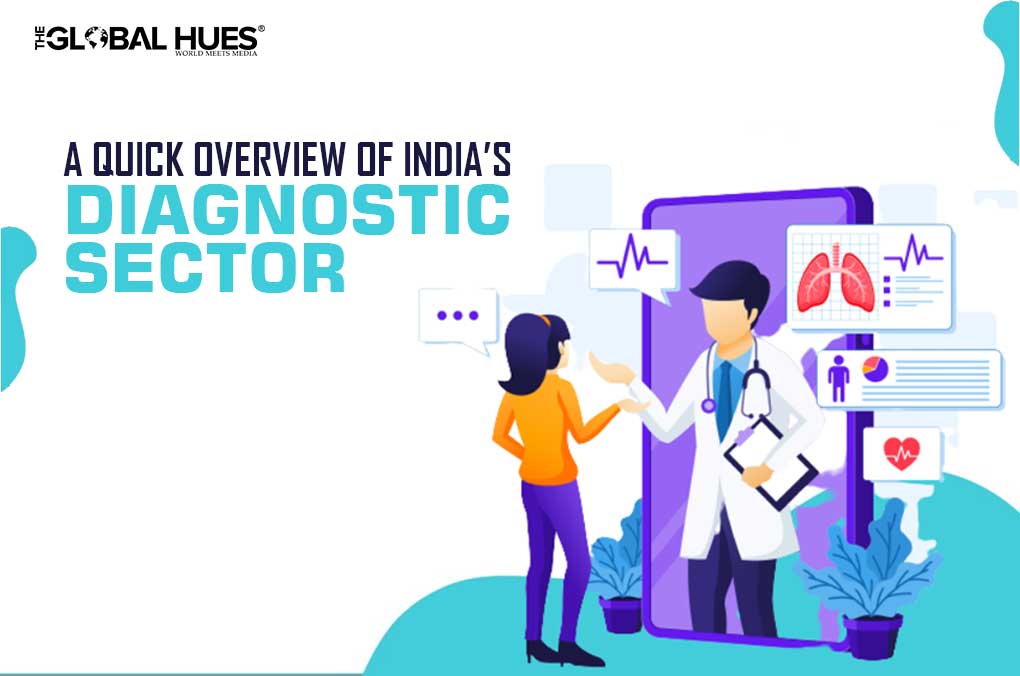The diagnostic industry plays a crucial role in the healthcare industry because more than 70% of medical decisions are based on the diagnosis and the detection of the disease. The diagnostic industry and the services provided by it are the most affordable in India in comparison to other countries. Because of the affordability, people are able to diagnose the disease at an early stage and get early therapy to cure it.
The diagnostic industry is estimated at Rs. 675 billion and is expected to grow at a rapid annual rate of more than 10 per cent over the next 5 years. The growth is driven by the increasing prevalence of diseases, ageing, insurance penetration and proliferation of the income. Around 40-50% of diagnostic centres are working in Tier I cities and the remaining are from Tier II and III cities.
TYPES OF DIAGNOSTIC CENTRES
Undoubtedly, the diagnostic segment is a critical component of the healthcare sector. Majorly, there are three types of diagnostic centres in India:
-
Hospital-Based Diagnostic Centres
These centres are located on the premises of the hospitals. Generally, hospitals have in-house pathology labs and radiology centres for the patient. The share of hospital-based diagnostic centres in the diagnostic industry is 37%.
-
Diagnostic Chains
The diagnostic chain comprises two or more diagnostic centres. These chains enjoy the benefit of years of experience, brand name and trust, quality norms and authorizations that help patients to provide quality services. The diagnostic chain provides the radiology or pathology testing or both. The diagnostic chain contributes 16% to the industry.
-
Standalone Centres
Standalone diagnostic centres contribute the largest share in the diagnostic industry. The share of standalone centres is 47% in the market. These kinds of centres specialize in one particular kind, for example, they either provide radiology or pathology services. This section of the industry is growing substantially over the past few years.
GROWTH FACTORS

Owing to the rapid growth of the healthcare industry in the past few years, the number of diagnostic centres has also seen a sharp rise. The focus on early detection and prevention of medical conditions is increasing, thereby leading to increased use of diagnostic centres. Here are some notable growth drivers of the Indian diagnostic Industry:
-
Preventive Care And Wellness
In today’s time, people are getting more aware of their health and taking every preventive measure to avoid any unwanted circumstances. This change in behaviour leads to the growth of the industry because people are taking timely checkups and tests. The awareness and education towards the disease diagnosis are also helping the industry to flourish in the healthcare spectrum.
-
Prevalence Of Diseases
The rise in chronic and infectious diseases makes people conscious about their health. With the emergence of the Covid-19 pandemic, the demand for diagnostic centres and point-of-care (POC) escalated the market growth. According to the report by Global Cancer Observatory (an interactive web-based platform that presents global cancer statistics), India recorded 1,324,413 new cancer cases in 2020. As per other reports, the country conducted over 787,355,35 Covid tests as of March 28th, 2022. All these diagnoses are done in diagnostic labs, thereby helping the industry to flourish in the healthcare sector.
-
Rising Income
With the increase in income, people are able to go for routine checkups and ensure a healthy life. They have started preferring the quality of diagnostic centres’ services over the price. For them, quality tests are necessary, even if they have to pay a little more money. An increase in income levels means that the person can spend more on healthcare services. This has led to the growth of the overall healthcare sector and consequently the diagnostic industry.
-
Ageing Population
India with its continuously growing population is witnessing a sharp spike in the number of elderly people. It is growing two-fold in the past few years. Elderly people are more prone to morbidity and infection. In order to keep the older generation healthy, it is important to conduct routine checkups and diagnose if there is a possibility of any disease.
TECHNOLOGICAL ADVANCEMENTS IN THE INDUSTRY
Like any other industry, technology has also impacted diagnostic centres. The application of technological equipment and robotic tools significantly increases the efficiency of the services provided by the diagnostic centres. Here are some of the technological advancements that are helping the diagnostic centre industry:
-
Real-Time Diagnosis
Wearable devices are pretty common in modern times. The bio-sensors watches, bands, contact lenses and rings monitor heart rate, blood pressure, oxygen saturation, temperature and many other things. If there are any abnormal changes in the body, it is detected by these technological devices. With these devices, people can diagnose the disease even when there are no symptoms of the disease. It is different from any traditional mode of diagnosis, but is efficient and also provides the benefit of continuous monitoring.
-
Use Of Artificial Intelligence
Artificial intelligence has the enormous potential to provide adequate results in diagnostic performance. AI is used in diagnostic imaging more frequently. It reduces the efforts and saves time while providing accurate results. Its deep learning models help healthcare professionals with labour-intensive tasks and assist without any complexity.
-
Point of Care & Home-based Testing
The technology makes it easier to get diagnostic tests done for the patients as well as healthcare professionals. With the help of new technological tools, rapid testing is done at the convenience of home or the nearest diagnostic centres. It simplifies the testing procedures and gives accurate results in a short period of time.
Technology has its limitations also, it is generally considered that with the use of technology, there is a risk to the data privacy of the patients. The other problem with the technology is that the physician’s role will be greatly impacted due to the technological assistance. If the industry tackles these issues effectively, the industry will grow to a great extent.
GOVERNMENT INITIATIVES
The government of India is taking the initiative to help the industry grow and better the facilities across the country. The health ministry has also announced the mission of free of charge tests under ‘Ayushman Bharat’ by 2025.
The national-level platform ‘Integrated Health Information Platform (IHIP)’ will be set up for public health labs. The second mission for the government in ‘Ayushaman Bharat’ would be to establish inclusive diagnostic centres and medical labs.
THE ROAD AHEAD
The diagnostic industry is an emerging sector and has a lot of potential. The increase in healthcare expenditure helps the diagnostic industry to grow eventually. Technology plays a pivotal role in transforming the industry and making it more efficient. India’s diagnostic industry is moving towards providing quality and affordable medical facilities.



